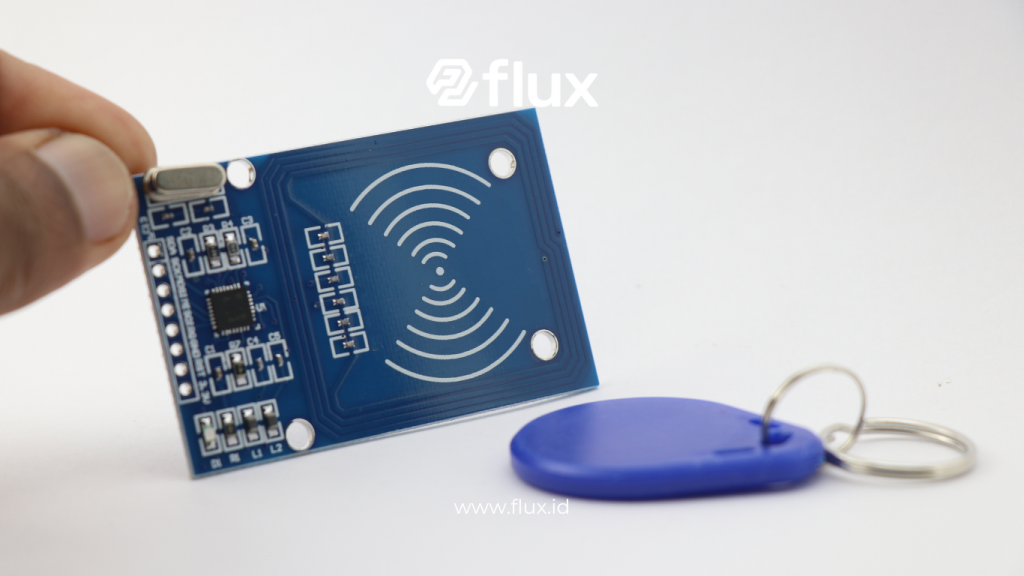Don't miss our holiday offer - 20% OFF!
Efficient financial asset management is key to success in today’s business world. With technological advancements, innovative solutions like RFID (Radio Frequency Identification) card sensor technology have emerged to assist companies in better managing their assets. This article will discuss how RFID technology can optimize your financial asset management, its benefits, and practical guidance for implementation.
Contents
What is RFID Card Sensor Technology?

RFID card sensor technology is a method for identifying and tracking objects using radio waves. This system consists of two main components: RFID tags and RFID readers. RFID tags can be attached to items or assets, while RFID readers are used to read the information from those tags. This process allows companies to accurately and efficiently track and manage assets.
Key Components in an RFID System
- RFID Tags: There are two types of RFID tags: active and passive. Active tags have their own batteries, while passive tags rely on energy from the reader’s signal.
- RFID Readers: Devices used to read data from RFID tags. These readers can connect to a computer or asset management system.
- Asset Management Software: Used to process and analyze the data collected by the RFID readers, facilitating asset management.
Why Choose RFID Technology for Asset Management?

Read More: IoT Sensors for Financial Departments: Enhancing Accuracy, Security, and Operational Efficiency
1. Accuracy and Efficiency
With RFID technology, companies can reduce human error that often occurs during manual asset counting. RFID readers can scan multiple tags simultaneously in a short time, thus increasing operational efficiency.
2. Fast Processing Time
Scanning with RFID is much quicker than manual methods. With shorter times, companies can conduct inventory regularly without disrupting operational activities.
3. Real-Time Tracking
RFID technology allows companies to track the location and status of assets in real time. This timely information is crucial for better and more prompt decision-making.
4. Enhanced Security
With the ability to track and monitor assets accurately, the risk of loss or theft can be minimized. Timely information about asset location can help companies respond quickly to situations.
Benefits of Implementing RFID Technology
1. Reduction in Operational Costs
Although the initial investment in an RFID system may be significant, the long-term benefits include reduced operational costs. Efficiency in asset management can lower the need for manual labor and optimize resource use.
2. Increased Accountability
With RFID systems, each asset has a unique identity that can be tracked. This enhances accountability in asset management and makes it easier for companies to conduct audits and reporting.
3. Better Inventory Management
RFID systems provide accurate information about stock and inventory, helping companies manage supplies more effectively. This has the potential to improve cash flow and reduce the risk of stockouts.
4. Support in Regulatory Compliance
In certain industries, companies are required to comply with specific regulations related to asset management. RFID technology simplifies reporting and documentation, assisting companies in meeting these requirements.
How to Implement RFID Technology

Read More: How RFID Card Sensors Work: Enhancing Asset and Inventory Management in the Finance Department
1. Needs Assessment
Before implementing an RFID system, conduct an assessment of business needs and the assets to be managed. Identify the goals you want to achieve with RFID technology.
2. Selection of System Components
Choose RFID tags, readers, and management software that suit the needs of your company. Ensure the selected components are compatible with each other and can be integrated with existing systems.
3. Employee Training
Provide training for employees who will use the RFID system. Ensure they understand how the system works and its benefits for the company.
4. System Testing
Before fully launching the system, conduct testing to ensure all components are functioning properly. This trial run will help identify and address any potential issues.
5. Monitoring and Maintenance
After implementation, conduct regular monitoring to ensure all assets are managed well. Perform routine system maintenance to keep it functioning optimally.
Challenges in Using RFID Technology

Read More: Understanding How PIR (Passive Infrared Sensors) Work for Better Home Security
1. High Initial Costs
The initial investment for an RFID system, including tags, readers, and software, can be a barrier for some companies, especially small businesses.
2. Integration Issues
Integrating an RFID system with existing systems can pose challenges. Companies must ensure that the new system can operate well without disrupting ongoing operations.
3. Data Security
Data collected through the RFID system must be protected to prevent unauthorized access. The use of encryption and other security measures is crucial to maintaining information confidentiality.
Case Study: Success of RFID Implementation
Example Company
A large logistics company in Indonesia implemented RFID technology to manage its assets and inventory. With the RFID system, the company successfully reduced inventory processing time by 50% and lowered operational costs by up to 30%. This implementation also improved accountability in asset management and expedited the shipping process.
Conclusion
RFID card sensor technology is an innovative solution that can optimize your financial asset management. With advantages such as accuracy, efficiency, and real-time tracking, this technology helps companies enhance performance and reduce operational costs. Despite challenges in implementation, the long-term benefits of RFID systems make them a valuable investment for companies seeking to improve their asset management.
By following the proper implementation steps, companies can leverage this technology to achieve a competitive edge in managing their financial assets.





